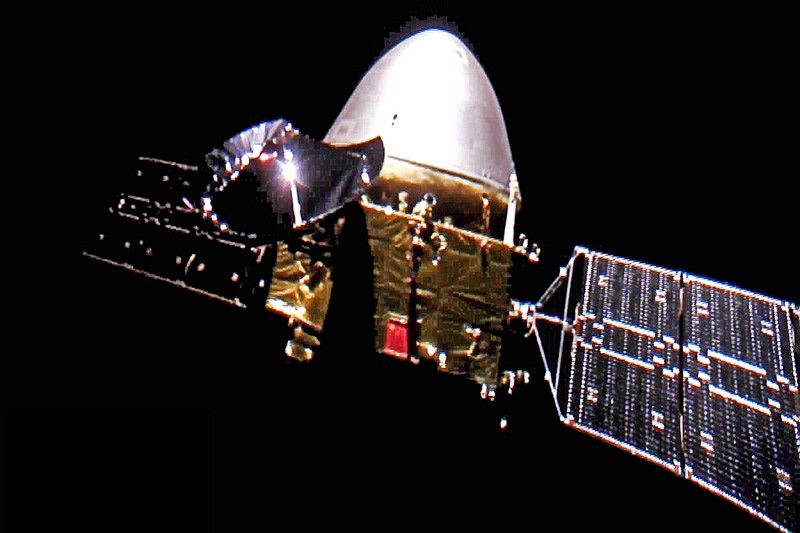China has achieved another milestone in space. Its first spacecraft designed to explore Mars arrived at the planet successfully on 10 February just before 8.00 p.m. Beijing time, a day after the United Arab Emirates’ Hope spacecraft.
Tianwen-1 is now orbiting the red planet. In three months’ time, it will drop a lander and rover to the Martian surface. Between them, the orbiter and rover will explore the geology and soil characteristics of Mars, including searching for water and ice.
“Successfully reaching Mars’s orbit is one of the mission’s key challenges,” says Li Chunlai, deputy chief designer of the Mars exploration programme, based in Beijing. But the pressure is still on, he says, as the mission prepares to land autonomously on the planet’s northern hemisphere. If the landing is successful, the rover, which carries 6 instruments, will explore the planet for at least 92 Martian days, each of which is equivalent to a full day and 37 minutes on Earth.
In orbit, Tianwen-1, which carries seven scientific instruments, will begin taking precise images of the landing region known as Utopia Planitia — a flat expanse of volcanic rock in a large basin. The area is close to the large volcano Elysium Mons, where domes, pitted cones and other landforms have been found that could be linked to the presence of water or ice, says Li. The mission will explore whether an ancient ocean ever existed in the northern region of Mars, and study the geological evolution of volcanoes there.
Ambitious plans
Tianwen-1 will also test the technologies China will need for an ambitious sample-return mission planned for later this decade, and longer-term goals to send people to Mars, says David Flannery, an astrobiologist at Queensland University of Technology in Brisbane, Australia.
The landing site’s flat topography and low solar and cosmic radiation levels, along with its potential for water or ice, “make it the sort of place you might think of hosting the first human mission”, says Flannery.
A subsurface radar aboard the orbiter will help researchers to study structures below Mars’s polar ice caps, says Roberto Orosei, a planetary scientist at the Institute of Radioastronomy of Bologna in Italy. Europe’s Mars Express, an orbiter that has been circling Mars since 2003, previously found water lurking below the surface of the southern polar cap. Orosei hopes that Tianwen-1’s radar, which can probe structures more than 100 metres below the surface at frequencies and resolutions that previous missions have not been able to study, will help to explain how the buried lakes have remained liquid.
Tianwen-1’s orbiter will hopefully continue to collect data on Mars for years. This is important because Mars Express, which has been in operation for almost two decades, could be nearing the end of its lifetime, says Orosei.
NASA’s Perseverance rover is expected to land on Mars on 18 February.








 User Center
User Center My Training Class
My Training Class Feedback
Feedback













Comments
Something to say?
Log in or Sign up for free